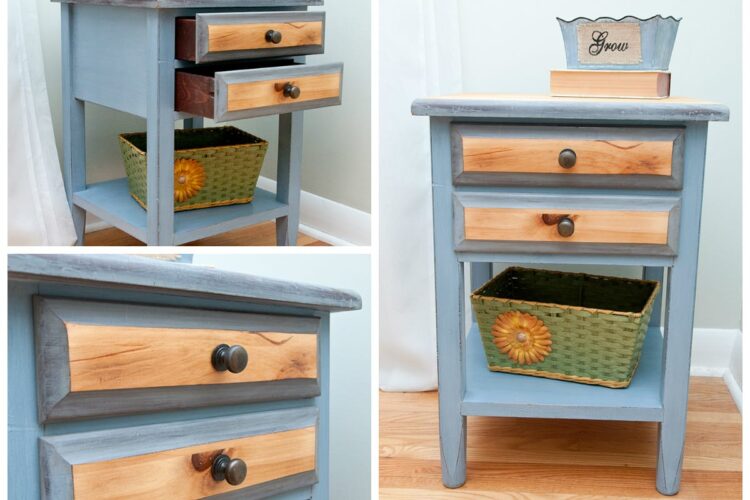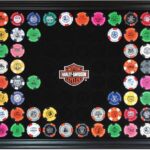
I. Understanding Upcycled Furniture: What It Is and Its Value
II. Factors to Consider When Pricing Upcycled Furniture
III. Strategies for Setting Competitive Prices on Upcycled Pieces
Understanding Upcycled Furniture: What It Is and Its Value
Have you ever walked into a thrift store or a flea market and spotted a piece of furniture that looked like it had seen better days? Instead of dismissing it, what if you could transform that gem into something stunning and unique? Welcome to the world of upcycled furniture! It’s a concept that’s gaining popularity, and for good reason!
What is Upcycled Furniture?
At its core, upcycled furniture involves taking old or discarded pieces and giving them a new lease on life. This can mean anything from a simple coat of paint to a complete overhaul where you combine different pieces to create something entirely new. The beauty of upcycling is that it breathes new life into items that might otherwise end up in landfills. Plus, it allows for incredible creativity and personalization!
Why is Upcycled Furniture Valuable?
There are several reasons why upcycled furniture holds value, both financially and sentimentally:
- Environmental Impact: By choosing upcycled furniture, you’re making a conscious choice to reduce waste and promote sustainability. This is a big deal in today’s world where we are encouraged to be more eco-friendly.
- Unique Style: Every upcycled piece tells a story. You won’t find two identical items, making your furniture choices truly one-of-a-kind. This uniqueness can elevate a space and make it feel more personal.
- Quality Craftsmanship: Many upcycled pieces are made with care and attention to detail, often surpassing mass-produced furniture in quality. Upcyclers often use stronger materials from older furniture that have stood the test of time.
- Affordability: Upcycled furniture can often be more affordable than buying brand-new items, especially high-quality pieces. Plus, you’re investing in something with character and history.
The Creative Process
Upcycling isn’t just about giving furniture a new look; it’s also a creative journey. Many upcyclers find joy in the challenge of working with items that others might overlook. They envision potential where others see only flaws. This transformation process can be incredibly rewarding, allowing you to express your style and creativity.
Community and Connection
Another beautiful aspect of the upcycling movement is the community it fosters. There are countless online forums, local workshops, and social media groups where enthusiasts share their projects, tips, and inspiration. This connection can lead to friendships and collaborations that enhance the upcycling experience. So, whether you’re a seasoned pro or just starting, there’s a vibrant community waiting to welcome you!
Conclusion
In summary, upcycled furniture is not just a trend; it’s a movement towards sustainability, creativity, and individuality. It allows us to cherish the past while embracing the future. So next time you come across an old chair or a worn-out table, take a moment to imagine how it could be transformed into something spectacular. You never know, you could be on your way to creating a masterpiece that adds both beauty and value to your home!
Factors to Consider When Pricing Upcycled Furniture
When it comes to pricing upcycled furniture, there’s a lot more to it than just slapping a number on a piece and hoping for the best. It’s an art and a science, and understanding the right factors can help you determine a fair and competitive price. Let’s dive into some essential elements you should consider!
1. Material Costs
First off, let’s talk about the materials. What did you use to create your stunning upcycled masterpiece? Whether it’s reclaimed wood, vintage upholstery, or even some funky hardware, you need to account for the costs of these materials. Keep in mind:
- Quality Matters: The higher the quality of the materials, the more you can charge. Premium materials often attract buyers willing to pay a bit more.
- Source Your Materials: If you snagged your materials for a steal, that’s great! But don’t undervalue them because they were inexpensive.
2. Labor and Time Invested
Next on the list is your time. Upcycling isn’t just a hobby; it’s a labor of love! Consider how much time you spent on the project. This includes:
- Designing and planning the piece
- Researching techniques or styles
- Actual hands-on work: sanding, painting, reupholstering, etc.
Be sure to factor in a reasonable hourly wage for your time. This not only reflects your skill but also respects the effort you put into the piece.
3. Unique Value Proposition
What makes your piece special? Is it a one-of-a-kind design or a unique history? Maybe it has a story that resonates with potential buyers. Highlighting these aspects can add perceived value. Ask yourself:
- Is there a compelling story behind this item?
- What sets it apart from similar pieces?
4. Target Market
Your target audience plays a huge role in pricing. Understand who your potential buyers are and what they are willing to pay. For example:
- If they’re eco-conscious consumers, they might value sustainability over other factors.
- If they’re looking for trendy home décor, they may be willing to pay a premium for fashionable pieces.
Engage with your community, either online or in person, to gauge their preferences and price sensitivity.
5. Local Market Trends
Lastly, keep an eye on the local market. Prices can vary dramatically from one area to another. To stay competitive:
- Research similar items online and in local shops.
- Visit flea markets or thrift stores to see what similar pieces are selling for.
This can give you a solid benchmark for pricing your creations. Remember, it’s about finding that sweet spot where your craftsmanship and market demand intersect!
In conclusion, pricing upcycled furniture involves a blend of material costs, labor, unique qualities, your target market, and local trends. So take your time, evaluate these factors carefully, and set a price that reflects the love and effort you’ve poured into your work. Happy upcycling!
Strategies for Setting Competitive Prices on Upcycled Pieces
So, you’ve transformed that old dresser into a stunning side table or turned a vintage suitcase into a chic pet bed. Now comes the exciting part: pricing your upcycled furniture! Setting the right price can feel a bit like walking a tightrope, but with some savvy strategies, you can find a price point that feels just right. Let’s dive into how you can effectively price your upcycled treasures!
1. Know Your Costs
First things first, let’s make sure you have a solid grasp of your costs. After all, we want to ensure you’re not just giving your beautiful creations away. Here’s what to consider:
- Materials: Calculate the total cost of materials used for your upcycled project. This includes paint, hardware, and any other supplies.
- Time: Think about the hours you spent working on your piece. Assign an hourly wage to your time, even if it’s modest.
- Overhead: Don’t forget to account for any additional costs like tools, workspace, and utilities.
Once you have a clear picture of your costs, you’ll have a solid foundation for your pricing strategy!
2. Research Market Prices
Next, it’s time for some good old-fashioned sleuthing! Look at what similar upcycled furniture pieces are selling for in your area or online. Check popular platforms like Etsy, Facebook Marketplace, or local thrift stores. Here’s how to go about it:
- Search for items that are similar in style, size, and functionality.
- Take note of their prices, and see if they are selling quickly or lingering on the market.
- Consider the condition and craftsmanship of your piece compared to others.
This research will help you gauge an appropriate price range while keeping your offering competitive!
3. Highlight Unique Features
What makes your upcycled piece stand out? Maybe it has a unique history, a clever design, or a fantastic finish that you lovingly applied. Be sure to emphasize these aspects when setting your price. Here’s how:
- Storytelling: Share the story behind the item—what inspired you to upcycle it, or any special techniques you used. This can elevate perceived value.
- Quality: If you used high-quality materials or techniques, make that clear! It justifies a higher price.
- Customization: If your piece can be personalized in some way, factor that into your pricing. Custom items often command a premium.
4. Be Open to Negotiation
When pricing upcycled furniture, it’s wise to build in a little wiggle room for negotiation. This doesn’t mean you should undervalue your work; rather, it allows potential buyers to feel like they’re getting a deal. Set your price slightly above your bottom line, and be prepared to discuss it if someone shows interest.
5. Test and Adjust
Finally, don’t be afraid to experiment! If your pieces aren’t selling, consider adjusting your price. It’s perfectly okay to test different price points and see what resonates with your audience. Tracking sales data can provide invaluable insights into what works best.
In the end, pricing upcycled furniture is both an art and a science. By knowing your costs, researching the market, highlighting unique features, being open to negotiation, and adjusting as needed, you’ll be well on your way to setting competitive prices that reflect the value of your hard work!










Comments